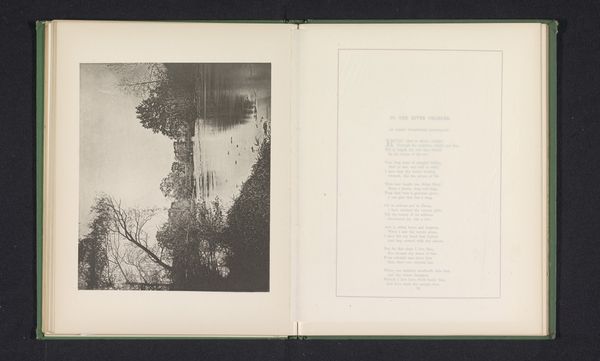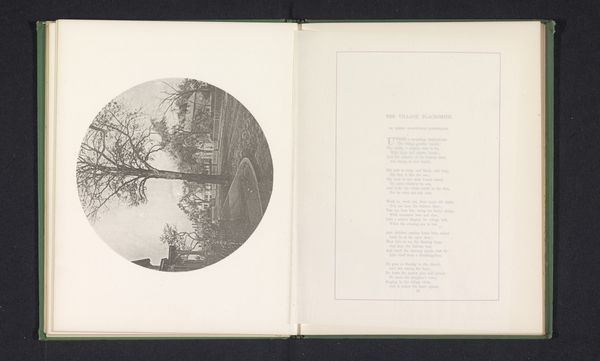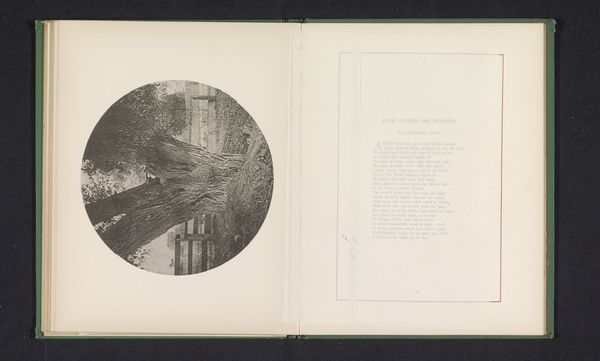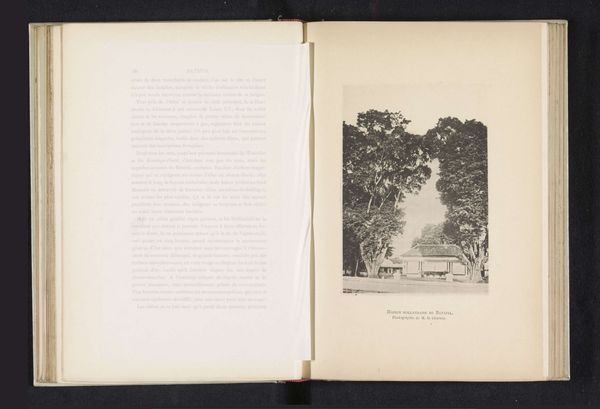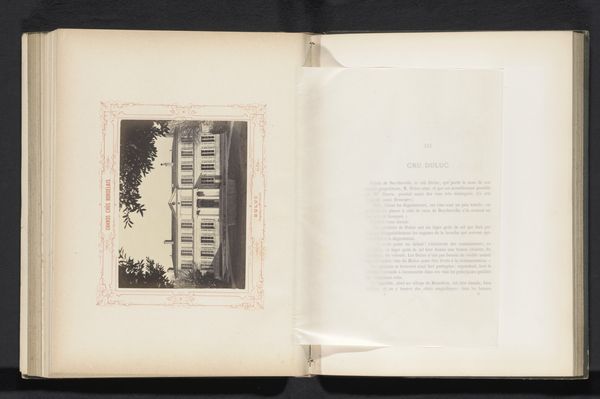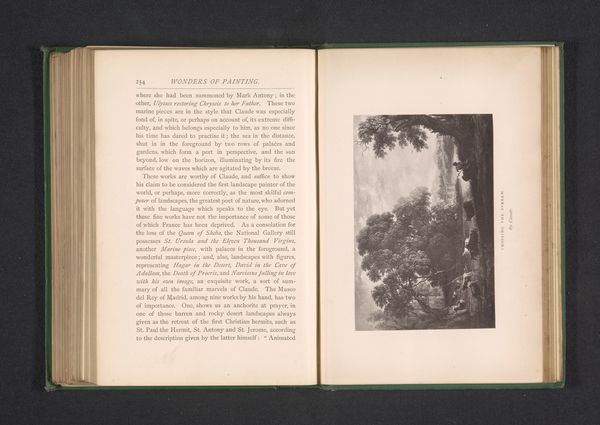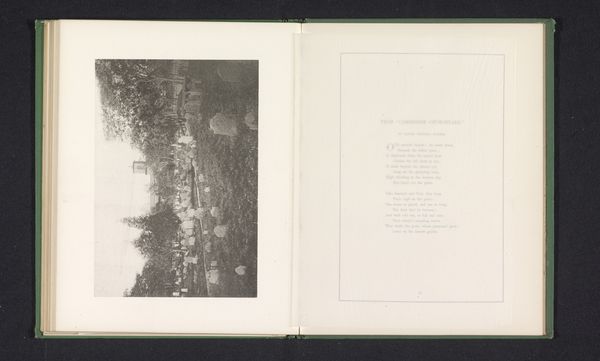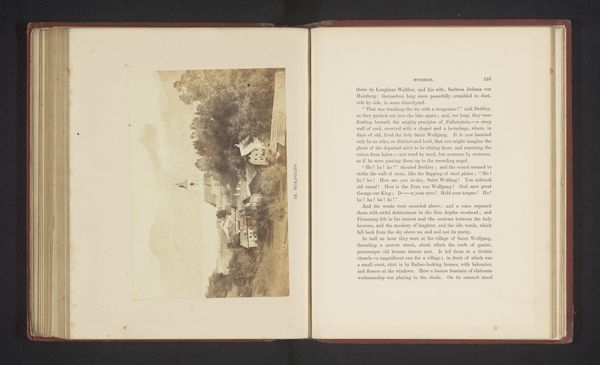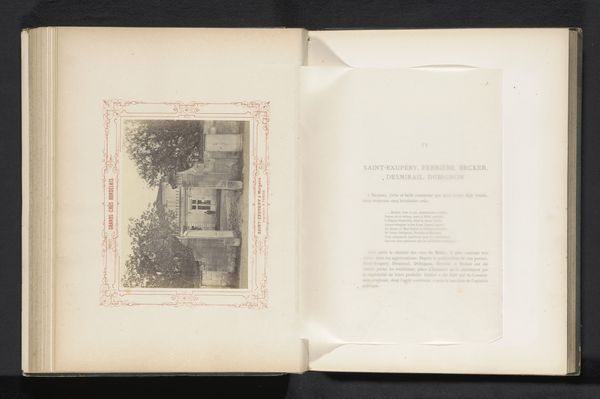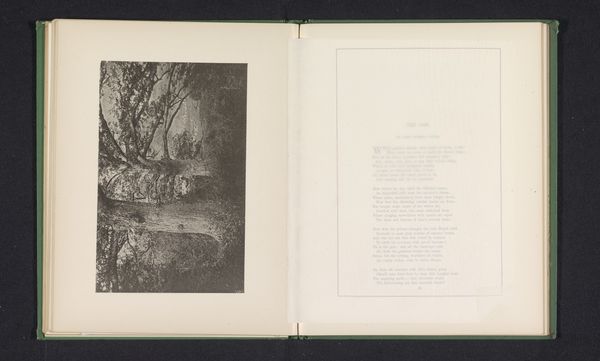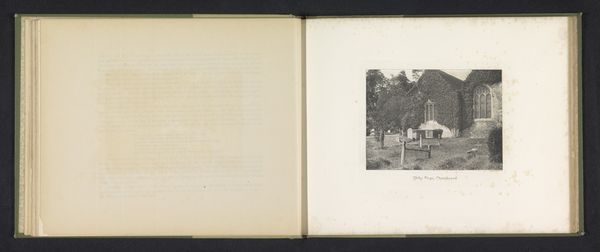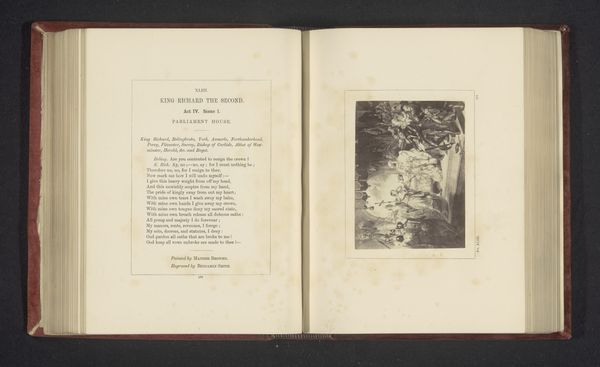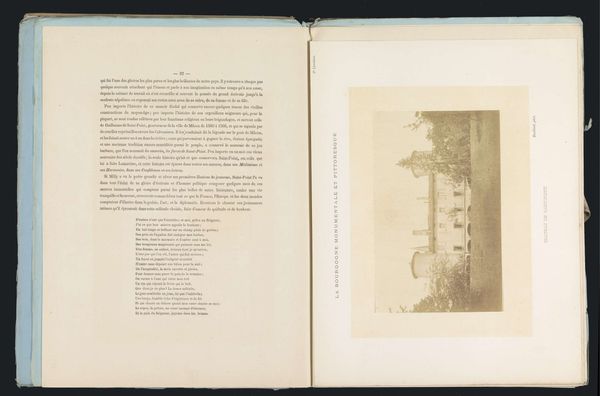
#
aged paper
#
homemade paper
#
paper non-digital material
#
paperlike
#
personal journal design
#
stylized text
#
thick font
#
delicate typography
#
thin font
#
building
#
small font
Dimensions: height 155 mm, width 177 mm
Copyright: Rijks Museum: Open Domain
Curator: What we're looking at here is "Gezicht op Elmwood te Cambridge," a piece created before 1876 by William James Stillman. It's presented on what appears to be aged, homemade paper. Editor: It feels deeply contemplative. The greyscale palette, combined with what looks like delicate typography, evokes a sense of quiet reflection and a bygone era. Curator: The format as an open book provides an intimate lens. We see on one side, a photographic print adhered to the aged paper of Elmwood—a building enshrouded by trees, rendered with what seems a muted stillness. On the other page, there’s stylized text. Editor: Yes, the stark contrast between the visual and the textual creates a distinct dynamic. It’s less about immediate clarity and more about atmosphere, isn't it? The poem across from the Elmwood print serves more as an emotive accent than an explanation. It asks you to make your own historical assumptions about the image opposite the text. Curator: Considering Stillman’s context, it raises fascinating questions. He lived through significant shifts in both art and photographic technology, while he moved across geographic boundaries in Europe and the US. The decision to root this photo to handmade paper suggests, possibly, a reclaiming of craftsmanship and aesthetic intention. Editor: Absolutely. The rough paper surface and unique letterforms oppose the cold precision often associated with photography. He juxtaposes modern and artisanal media to draw attention to material agency. It invites questions about the politics embedded in what we might typically regard as neutral surfaces. Curator: Perhaps it also implies how personal memories reside within physical, tangible forms. This combination encourages a profound encounter—it evokes introspection on change and historical memory. Editor: Exactly, this book-format and contrast feels poignant and almost ephemeral, like looking into memory itself. Thank you, Stillman.
Comments
No comments
Be the first to comment and join the conversation on the ultimate creative platform.

